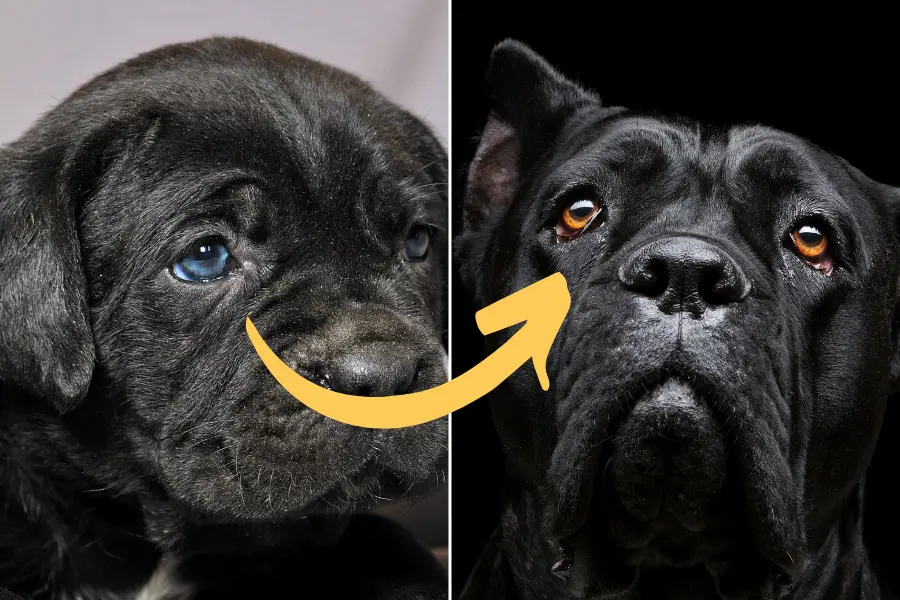Cane Corsos with blue eyes is a much bigger topic in the Cane Corso community than I imagined. There’s a lot of misinformation and confusion regarding the eye color of Cane Corsos, more precisely, the color blue.
Searching around Cane Corso forums and Facebook groups, I learned that hundreds of people have questions and concerns about the color of their puppy’s eyes. I figured that the best way to help is to write this article to clear up any misconceptions people might have.
Cane Corso Blue Eyes Misconception
The misconception that adult Cane Corsos can have blue eyes probably stems from the fact that Corso puppies actually do have blue eyes. While all puppies start with blue eyes, Cane Corso’s eyes change to various shades of Brown, Amber, or Gold when they grow up.
During the first two weeks of their lives the puppies’ eyes are almost completely closed. As they slowly open their eyes and develop their vision, a beautiful blue color will appear. Although Cane Corsos look adorable with blue eyes, it won’t last forever, so snap some photos before they change.
Another misconception is that grey-coated Cane Corsos have blue eyes. Again, the puppies of grey Cane Corsos do have blue eyes, but they will eventually turn brown. Although grey Cane Corso’s eyes can be such a light shade of brown that it almost looks greyish (you can even argue that they really are grey), which people sometimes mistake for blue.
At What Age Do Cane Corso’s Eyes Change Color?
Cane Corso puppies are born with blue eyes because the pigment melanin in their irises isn’t yet fully developed. About four to five weeks after birth their actual eye color will slowly become visible, and they will completely change color at around three months of age.
The whole process of pigment development usually finishes at around three months of age, but it could take as long as six months in some cases. And that’s when their eyes completely change their color to various shades of brown, amber, or grey.
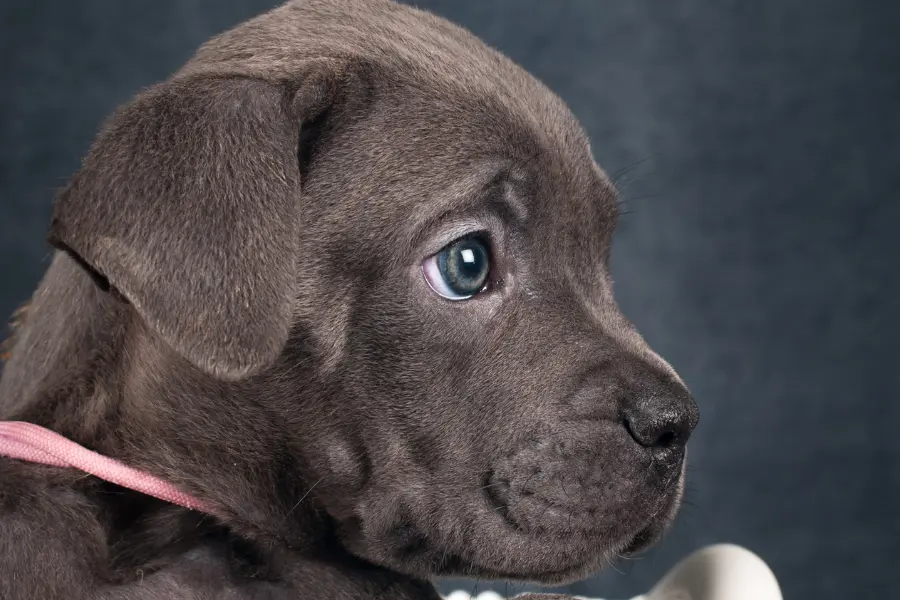
Can They Stay Blue Forever?
While breeds like Siberian Huskies, Border Collies, and Australian Shepherds can have blue eyes when they grow up, Cane Corsos will not retain their blue eyes forever. The chances of a Cane Corso keeping their blue eyes is a one in a million.
If a Cane Corso’s eyes remain blue for life, it’s probably a genetic abnormality, and they should not be further bred. According to the AKC’s breed standard, Blue eyes are considered a disqualifying factor for Cane Corsos that compete in dog shows.
Blue Eyes Cane Corso Breeder Scam
According to Google, “blue-eyed Cane Corsos for sale” is searched between 1 thousand to 10 thousand times every month. What does this mean, and why is this a concern?
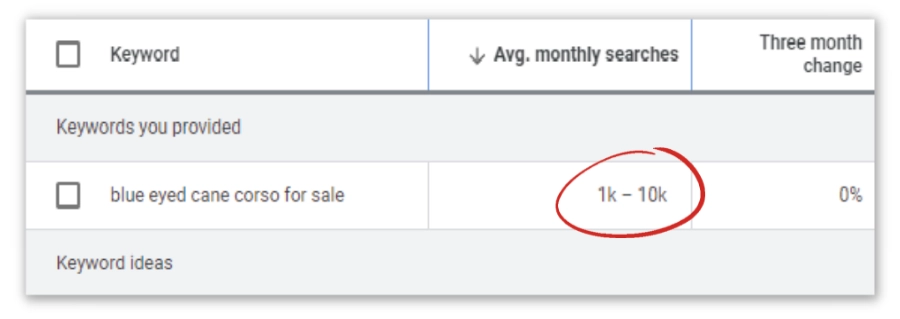
With such a massive volume of misinformed people, scam breeders were bound to catch on the trend to try to cash in on it. I have seen “breeders” on social media stating that they have these “rare” blue-eyed Cane Corsos for sale in an effort to pump up the price of their puppies.
Please stay away from any breeder that makes similar claims like these. These scammers are known for collecting large deposits for puppies and then just disappearing, not even delivering the puppy to the clients.
Cane Corso Eye Color Standard
The American Kennel Club has set a clear and simple standard for the eye color of Cane Corsos. Basically, they say that Cane Corsos should have brown eyes, and the darker they are, the better.
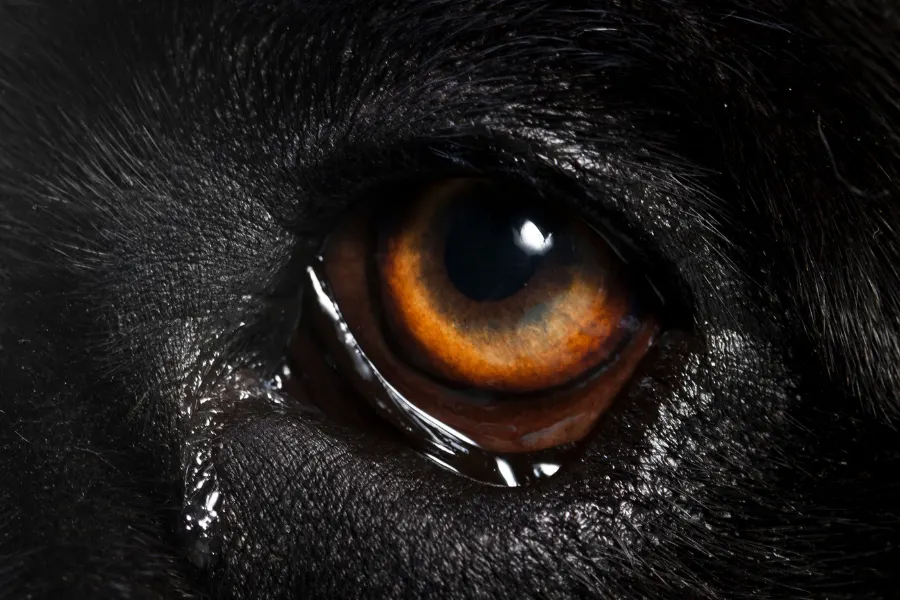
Acknowledging that Cane Corsos with lighter coat colors are genetically less likely to have darker eyes, the standard now states that the eye color should still be as dark as possible but proportionate to the dog’s muzzle(mask) color.
This ruling separates the eye color standard into two categories:
Black Muzzles – Cane Corsos with black muzzles (coat colors of black, fawn, or red, including their brindle variations) are preferred to have a deep and dark shade of brown or amber.
Grey Muzzles – Cane Corsos with grey muzzles (coat colors of grey, dilutes of fawn and red, including their brindle variations) a darker shade is still preferred, but lighter shades are also accepted.
To get an easier understanding of this, have a look at the two Cane Corsos in the photo below.
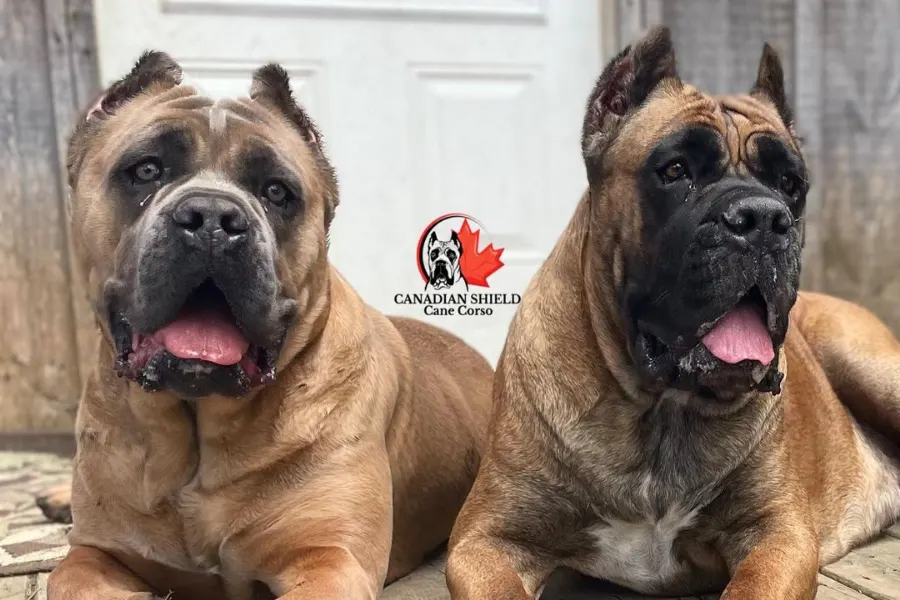
The Cane Corso on the left is a Fawn coat color with a grey muzzle, thus his eyes have a lighter shade compared to the Corso on the right, and that is completely okay.
The Cane Corso on the right is also a Fawn, but he has a black muzzle and his eyes are a dark brown color. According to the AKC standard, a drastically lighter shade wouldn’t be tolerated for the Cane Corso on the right.
Cane Corso Disqualifying Eye Colors
First of all, the AKC standard looks at the eye shape before the eye color. The eyes need to be medium-sized, round, and sort of almond-shaped but not bulging, and the haw(a third eyelid present in many animals) should be barely visible.
As for the eye color, the AKC is clear and straightforward: Blue and Yellow are disqualifying eye colors.
Cane Corso Blue Eyes
As I said earlier, every puppy is born with blue eyes, but adult Cane Corsos are not a breed that retains their blue color into adulthood. If an adult Cane Corso has blue eyes, it’s a defect and will be disqualified from any dog show.
Cane Corso Yellow Eyes
The so-called “yellow bird of prey eyes” is also a disqualification as per the AKC standard. Many people have the opinion that yellow eyes are more intimidating, and some go as far as to say that they give better night vision, making them better guard dogs when the sun comes down.
But that is just a myth. It comes from the fact that many nocturnal predators have yellow eyes. But if we look into the science, the iris color has nothing to do with superior night vision, it’s the structure and the anatomy of the eye that gives these predators superior vision.
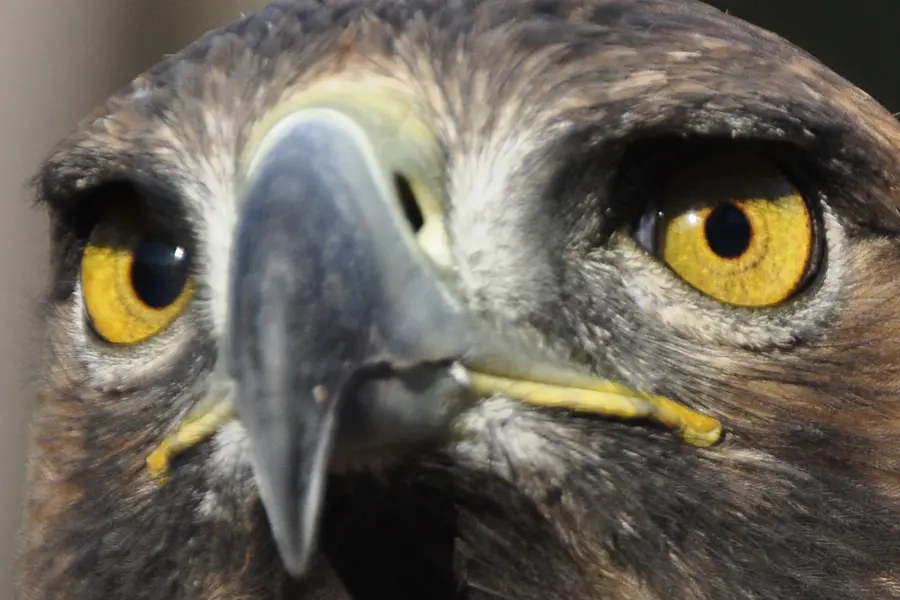
Yellow eyes are a mutation and a one-in-a-million chance of happening. Cane Corsos with yellow eyes should not be further bred.
Cane Corso Red Eyes
Cane Corso’s eyes are never really red. They can appear red, especially in Cane Corsos that have a dark coat. But that’s actually a deep and dark amber color.
When people say “Cane Corso red eyes,” they are maybe referring to an eye condition called “Cherry Eye,” which Cane Corsos are prone to develop.
Cane Corso Cherry Eye
“Cherry eye” is a term used to describe a prolapse of the third eyelid tear gland. Many animals, including dogs, have a third eyelid(nictitating membrane) located in the corner of the eye inside the lower eyelid. It serves as an additional protective layer for the eye.
The third eyelid contains a tear gland(sacus lacrimalis), and in normal circumstances, the third eyelid is only slightly visible. But when the tear gland becomes inflamed, it will swell up, become red, and prolapse, resembling a cherry. Thus the condition is known as “cherry eye.”
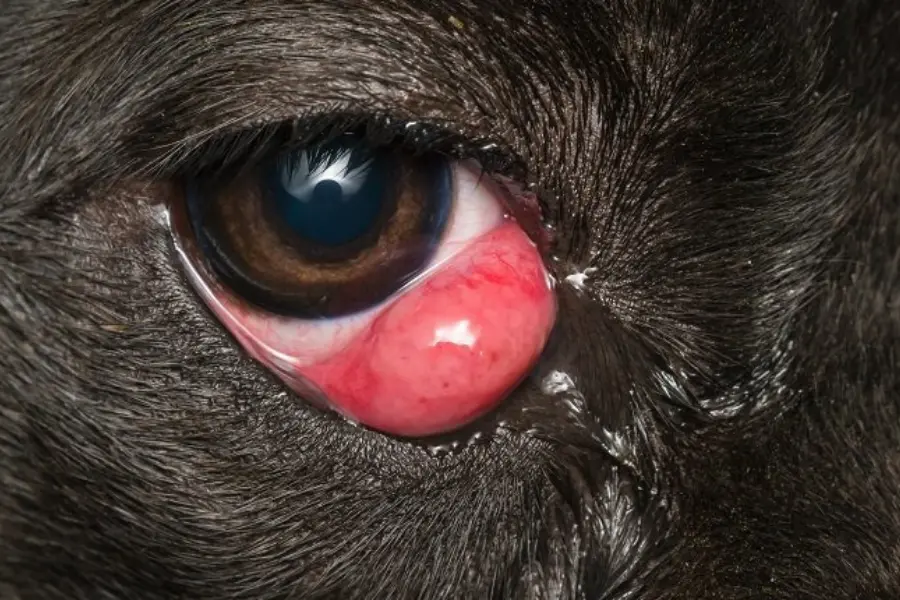
Inflammation and swelling may be large or small, but in any case, it will shut off the tear canal opening. Dogs that develop cherry eye are most likely genetically prone to chronically develop it over and over again, in which case surgery may be required. If you notice any signs of cherry eye in your dog, don’t try to solve it by yourself, please bring your dog to a veterinarian.
Other Common Eye Problems
Entropion – Entropion is a condition in which the eyelid turns inward, making the eyelashes rub against the eyeball causing discomfort and pain. Entropion can be congenital or activated.
- Congenital Entropion is always a disease of hereditary origin and is related to the dog breed (Cane Corsos are not genetically inclined to develop Entropion).
- Activated Entropion occurs as a consequence of photophobia resulting in chronic spasm m. orbicularis palpebrarum. Entropion can also occur as a result of eczema and scarring of the conjunctiva after surgery.
Ectropion is the opposite of Entropion, in which the eyelid rolls outward. Ectropion or inversion of the eyelids is a rare occurrence in dogs. It most often occurs as a result of scarring due to eyelid injuries. It causes discomfort and makes the eye susceptible to infections, and if left untreated it can potentially cause serious damage to the eyes.
Conclusion
Cane Corso puppies have beautiful blue eyes, but they will start to change into brown at around 3-4 weeks of age and finish their transformation by the age of 6 months.
The Cane Corso breed standard states that the darker the eyes are, the better, but lighter shades are tolerated for Cane Corsos that have a grey muzzle(mask).
I find both the blue eyes of a puppy and the brown eyes of an adult Cane Corso exceptionally beautiful and staggeringly striking. Take good care of the health of your Corso’s eyes and look out for any signs of infections or inflammations.
Recent Posts
How Much Does a Cane Corso Cost? Puppy Prices and Monthly Expenses
If you are thinking about getting a Cane Corso puppy, you better know what to expect financially. And I don't just mean what the puppy costs itself. We are talking about all the initial costs, the...
What Defines a Reputable Cane Corso Breeder - Responsible Breeding
Finding a reputable breeder is your first and most important step toward finding the perfect Cane Corso puppy for your family. A reputable breeder is a valuable asset in the journey of Corso...
